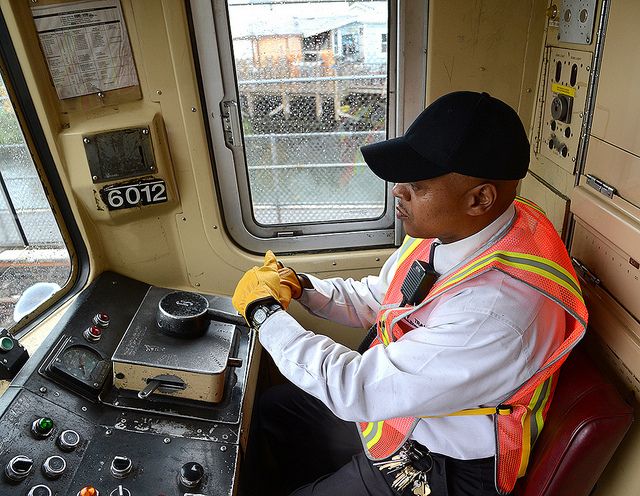Last-Minute NYC Holiday Gift Guide 🎁
We’ve created a holiday gift guide with presents for the intrepid New Yorker that should arrive just in time—


We’re following up our profile of the differences between New York and London cabbies with another breakdown of transit operators. This time, we look to the unsung heroes of the subway: the operators and conductors. They drive the city (and nearly 7.5 million people) along each weekday, with 1.7 billon trips made last year alone. But a year’s work just barely opens you up to the MTA’s benefits package. If you’re considering an illustrious career in the tunnels (and elevated and at-grade tracks) of the busiest and most expansive rapid transit network in North America, then be sure you meet the following requirements and are up to the challenge.
First off, you need to know which of the Metropolitan Transit Authority‘s (MTA’s) companies you’ll be working for. The MTA is a behemoth of public corporations with six subsidiaries–it even has its own government and police force. Its affiliate agency, New York City Transit, operates 24 subway and 224 bus routes serving the five boroughs. The network operates 24 hours a day and seven days a week, rare among most urban transit agencies worldwide.
Since late 1999, the MTA has opened up its application process to people other than its employees by way of a Civil Service test. In this way, the MTA essentially draws from a wider pool of potential subway operators than the TLC does of potential taxi drivers. Before taking the test, applicants are responsible for determining whether they qualify to become an employee through an Education and Experience Test Paper, a self-assessment form that demonstrates that the applicant has either five years of paid, full-time work experience or 120 college credits compounded with one year of work. Strict medical and drug screenings and English proficiency are also required, though–good news–applicants don’t have to be NYC residents.

Testing new rolling stock. Source: Flickr.com by Metropolitan Transit Authority
The official multiple choice test is taken by over 10,000 applicants annually, with a minimum passing mark of 70%. Only a few hundred spots are vacant, so many who pass are put on chronologically determined eligibility lists. Once applicants reaches eligibility, their Education and Experience Test Paper is screened for the appropriate requirements. Should they pass the screening and there is a vacancy, the applicant is appointed to a one-year probationary period during which they must complete all proper training in train operation, maintenance, and other operational duties.
Operating one of the most extensive rapid transit networks in the world means familiarizing oneself with an extensive list of rules and regulations, which can take between 6-12 months of training. From the start, it is important for operators to learn the equipment of either the A Division (numbered trains and the 42nd St Shuttle) or the B Division (lettered trains and the Franklin Avenue and Rockaway Shuttles), as most will work exclusively with their respective rolling stock. A Division trains, of the former IRT Company, have narrower and shorter cars than B Division trains, and endless nuances exist in the operational procedures between the two.
As with vehicles in the streets above them, subways are restricted to a variety of speed limits throughout the network’s length. Unlike cars, though, much of the older rolling stock does not come equipped with odometers. Instead, operators rely on a series of time signals on both grades (bends) and in stations, which determine the speed of a train based on time intervals. More complex than your average stoplight, these signals compound a variety of factors to allow a train to pass them. Essentially, on a one-shot Grade Time control, the operator has one shot to adjust the speed of the train at or below the limit, otherwise the train stop will be set to its tripping position, automatically halting the train. Speed is still a priority, and though train schedules are not fixed, operators must complete a run from one end of a line to the other within a certain timeframe.
Train crews almost always consist of two on-duty members: an operator and a conductor. The operator resides in a cab in the front car of the train and is responsible for the timely yet efficient movement of the train along the tracks and through stations. Conductors ride in the middle of the train and are responsible for operating its doors and making service announcements. Ad-libbing is strongly discouraged. According to the Notice of Examination, crew members’ duties include, but are not limited to, shunting trains, prepping trains, running them through car washes, and expect a list of physical demands that include both, “remaining in a seated position for extended periods of time,” and, “lifting heavy equipment.” Unofficially, crew members have to deal with tourists who refer to lines by their color, frustrated regulars who believe the MTA intentionally slows trains down to miss transfers, and knife-wielding lunatics who attempt to break into the cab. All in a day’s work..
Read more about the subway here. Get in touch with the author on his Twitter or his website, thisisnotreale.com
Subscribe to our newsletter